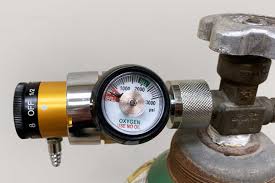The Crucial Role of Oxygen Cylinder Sizes in Wastewater Treatment
Customizing Solutions: Matching Oxygen Cylinder Capacities to Wastewater Treatment Needs
Wastewater treatment is a complex and essential process that relies on the precise management of various elements, and oxygen plays a pivotal role in promoting the growth of beneficial bacteria responsible for breaking down organic matter. The importance of oxygen cylinder sizes and capacities in this context cannot be overstated. The efficiency and success of wastewater treatment facilities hinge on selecting the right sizes and quantities of oxygen cylinders to meet the demands of the treatment process.
The biological treatment of wastewater involves the use of aerobic bacteria that thrive in the presence of oxygen. Oxygen is introduced into treatment tanks to create an environment conducive to the growth of these bacteria, which, in turn, break down pollutants in the water. The choice of oxygen cylinder sizes directly impacts the amount of oxygen that can be delivered to sustain these biological processes. Insufficient oxygen can lead to incomplete treatment and compromised water quality.

In wastewater treatment, one size does not fit all. The diverse range of oxygen cylinder sizes and capacities allows treatment facilities to tailor their solutions to the specific requirements of their operations. Larger treatment plants may opt for high-capacity cylinders to ensure a consistent and robust supply of oxygen for extensive treatment processes. Conversely, smaller facilities or those with fluctuating demands may find more utility in smaller, portable cylinders that offer flexibility and ease of use.
The importance of selecting the right combination of oxygen cylinder sizes is underscored by the need for operational efficiency and cost-effectiveness. Oversized cylinders may lead to unnecessary expenses, while undersized ones can compromise the treatment process. Thus, wastewater treatment facilities must carefully assess their oxygen requirements, taking into account the size of treatment tanks, the volume of wastewater to be treated, and the desired level of treatment efficiency.
By understanding the unique demands of their treatment processes and choosing oxygen solutions accordingly, these facilities play a crucial role in safeguarding water quality and promoting sustainability in the broader ecosystem.